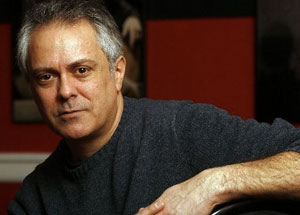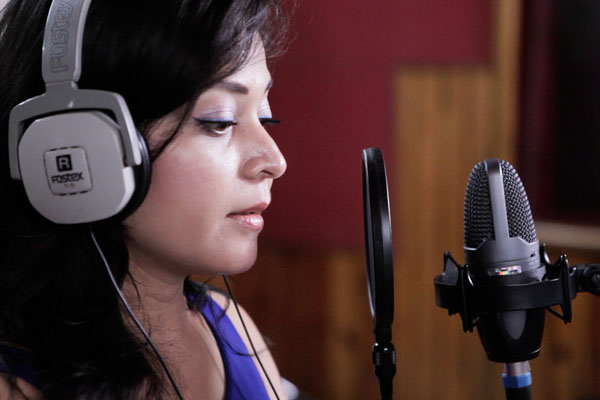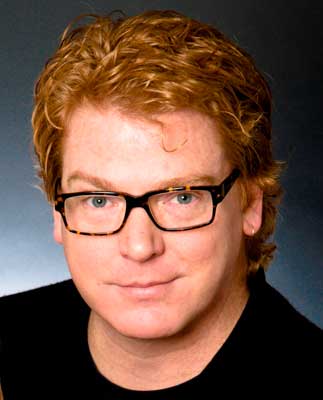 How the past is used to shape character, both our own, and the ones we play.
How the past is used to shape character, both our own, and the ones we play.
This is a guest post by Matthew Arkin
Six women are sitting on a bench at a playground. They are watching a three-year-old boy high up on the jungle gym, his balance precarious, his little hands tiring, his grip tenuous. He slips a little, catches himself, and pauses, looking back at his mother. He tries to read her face for an indication as to what he should do. Each of the women on the bench feels a different emotion as they look at the child.
The first woman remembers a time when she fell while rock climbing. She shattered her wrist, leading to surgery and months of painful physical therapy. She feels fear as she watches the child.
The second woman feels sad and lonely. Raised by a fearful mother, never allowed to climb a jungle gym, she remembers hours of sitting alone at the playground, watching the other children run and frolic.
The third woman sees the look of encouragement the mother gives the boy. She remembers her father coming to her own high school diving meets, and she feels joy. The fourth woman is focused on the boy. She doesn’t see the encouragement. She remembers her mother chatting with her gaggle of friends, never paying any attention to her. She feels anger and pain. The fifth woman remembers a time she let her own son climb too high on the jungle gym. He fell and needed stitches. She feels guilt. The mother of the boy simply feels pride.
Whenever I hear a student or a fellow actor working on a scene say about a character’s action as written or a suggestion from a director, “But I would never respond that way!” I think of this anecdote. Of course you would never respond that way! You haven’t lived the life the character has lived. As an actor, the text and the director will influence or insist upon the behavior and responses you are required to bring to the scene. How you would respond is, at first, completely irrelevant. The way the character would respond, the way the character has to respond, given the exigencies of the text and production, is paramount.
What determines how we respond to a given situation, a given stimulus? I like to think of the images of coffee grounds and kaleidoscopes. Just as water picks up the flavor and aroma of the particular coffee grounds it filters through, so your personality picks up the behaviors, beliefs, and attitudes of your time and culture. The same is true of a character you might play, and so you have to distinguish between the “coffee grounds” that have influenced you and the “coffee grounds” that have influenced your character. In addition, not only are you subject to the influences of your culture, your time and place, but specific incidents, either wonderful or traumatic, have refracted or warped your vision. We each view the world through a kaleidoscope that is filled with, and turned or twisted by, the large events of our life, impacting our view of the world around us. The same is true of any character you play. He or she will have her own coffee grounds and kaleidoscope.
For each of the women in the playground scenario, the situation they find themselves in, the data, or stimulus, they are receiving, is the same: The boy on the jungle gym. But for each woman this data is filtered through the coffee grounds of her own experience. Additionally, each woman views the world through her own kaleidoscope, and the events of her individual past have twisted that kaleidoscope so that, looking at the same event, they each see a different picture and have a different emotional response.
We are taught, if we are taught well, to act truthfully. When we are portraying a character, in order to find that truthful behavior, we naturally look to our own past, our own experiences, for the emotional context of the work we are doing. In looking at a scene many actors first ask the question “How would I respond in this situation?” But if this is the only question you are asking, if this is the departure point for your character work, you may arrived at skewed results. You are a different person than the character you are playing; you have your coffee grounds and kaleidoscope, the character has his or hers.
The question “How would I respond?” can only lead to truthful responses that also serve the text and the desires of the director, if other work is done first. As an actor, you must deal with both your own coffee grounds and kaleidoscope, and then those of the character you are playing. If you are embarking on the path of the artist, it is imperative that you deepen your understanding of yourself, of the influences that have shaped you. You must dedicate yourself to a path of self-knowledge, physically, psychologically, spiritually. The lion’s share of this work must be done on a personal level, with a therapist or counselor, at the gym or the dance studio, in church or with a rabbi or meditation guide. How you go about your own process of self-examination is your business, and there are many, many roads. But you cannot be an effective, truthful, inspiring actor without pursuing that knowledge.
Whatever path you choose in your self examination, the technique and exercises developed by the late Uta Hagen are a wonderful adjunct to your self-exploration, appropriate to your specific work as an actor. They allow you, in a classroom setting, to examine your own states of being in the theatrical or film set environment, in a performance context. As you gain understanding of your own processes and states of being, of your own coffee grounds and kaleidoscopes, you can then address the text, and immerse yourself in the study of the influences that have shaped the character you are to portray. After you have come to a thorough understanding of your own coffee grounds and kaleidoscopes, you are ready to take on the flavors of the character’s coffee grounds, to look at the world through his kaleidoscope. Then you can ask yourself “How would I respond to this situation?” and your answer will lead to truthful behavior on stage or before the camera, because you will have an internal understanding of the influences that have shaped you, both as yourself and as the character.
Matthew Arkin is an actor, author and acting teacher. He received a Drama Desk nomination when he originated the role of Gabe in Donald Margulies’ Pulitzer Prize winning Dinner With Friends. His Broadway appearances in The Sunshine Boys and Laughter on the 23rd Floor, and he has extensive stage, television and film credits. He teaches Technique and Scene Study in Los Angeles. For more information, visit www.matthewarkin.com, or subscribe to his Technique and Scene Study Newsletter.




